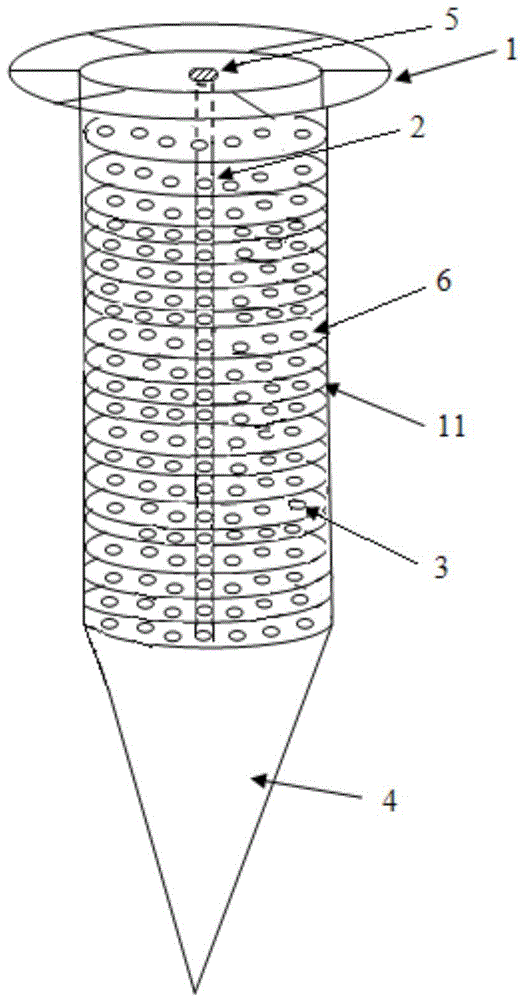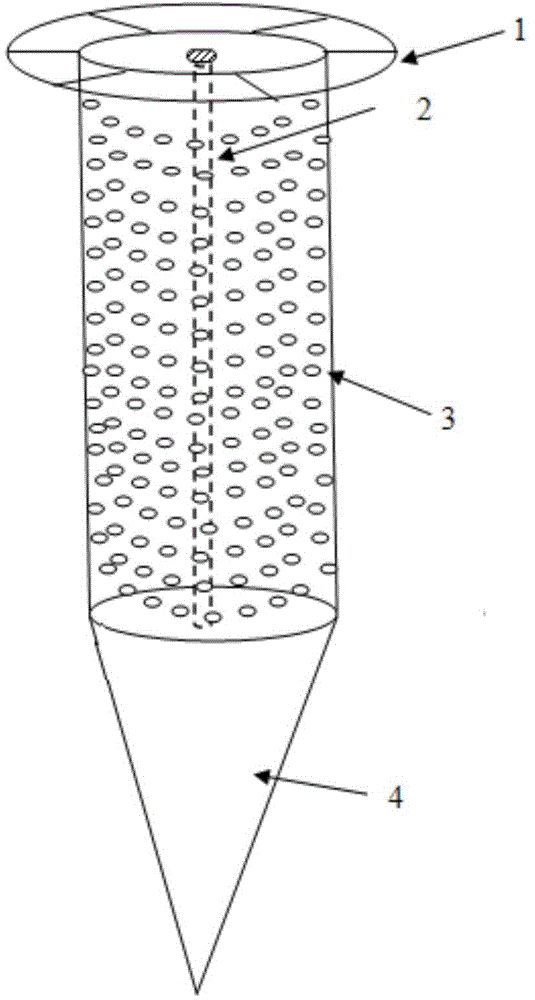In-situ layering collection device for pore water of cylindrical sediments in shallow water area
A collection device and sediment technology, applied in the field of environmental science or environmental engineering, can solve problems such as oxidation or loss, troubles in research work, and inability to grasp the content of reducing substances, so as to achieve the effect of guaranteeing the original properties
- Summary
- Abstract
- Description
- Claims
- Application Information
AI Technical Summary
Problems solved by technology
Method used
Image
Examples
Embodiment 1
[0026] Example 1: Collection of sediment pore water in rivers and lakes
[0027] (1) Collection of river sediment pore water
[0028] River water pollution is closely related to the release of endogenous pollution from river black and odorous sediments. Therefore, in order to study the pollution load of polluted water bodies and identify pollution sources, it is necessary to study the release of major pollutants in sediment pore water. To this end, the research team selected the Wandering River in Yantai as the research object, and set up three sampling stations in the upper, middle and lower reaches of the river to collect pore water in the columnar sediments of the river for analysis of major black-causing elements such as iron and manganese.
[0029] The operation is as follows:
[0030] In the first step, the pore water sampler (see appendix figure 1 ) to the predetermined sampling station, connect the outer ring 1 of the column with ropes and fix the load-bearing lead ...
Embodiment 2
[0038] Example 2: Collection of pore water in bay sediments
[0039] The release of pollutants in sediment through pore water is also one of the main sources of water pollution in semi-enclosed bays and other coastal waters. Therefore, it is very important to understand the release flux of sediment pore water under the influence of tides. In-situ sampling and analysis of the main pollutants. For this reason, the research team respectively selected the pore water in the sediments of the Jiahe Estuary, Taozi Bay and Sishili Bay in Yantai as the research objects, and carried out the determination of the heavy metal content in the pore water of the columnar sediments in this area using the device of the present invention. For the layered collection of columnar sediment pore water, the specific steps are the same as the collection method of columnar sediment pore water in rivers and lakes, except that in the area with a water depth of about 2 meters, the depth for divers to enter t...
PUM
 Login to View More
Login to View More Abstract
Description
Claims
Application Information
 Login to View More
Login to View More - R&D
- Intellectual Property
- Life Sciences
- Materials
- Tech Scout
- Unparalleled Data Quality
- Higher Quality Content
- 60% Fewer Hallucinations
Browse by: Latest US Patents, China's latest patents, Technical Efficacy Thesaurus, Application Domain, Technology Topic, Popular Technical Reports.
© 2025 PatSnap. All rights reserved.Legal|Privacy policy|Modern Slavery Act Transparency Statement|Sitemap|About US| Contact US: help@patsnap.com



